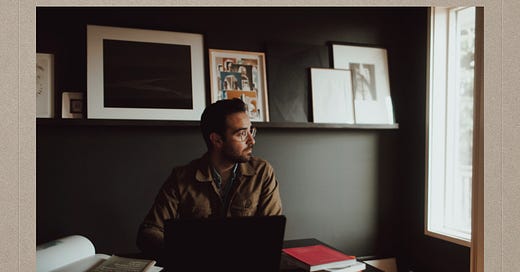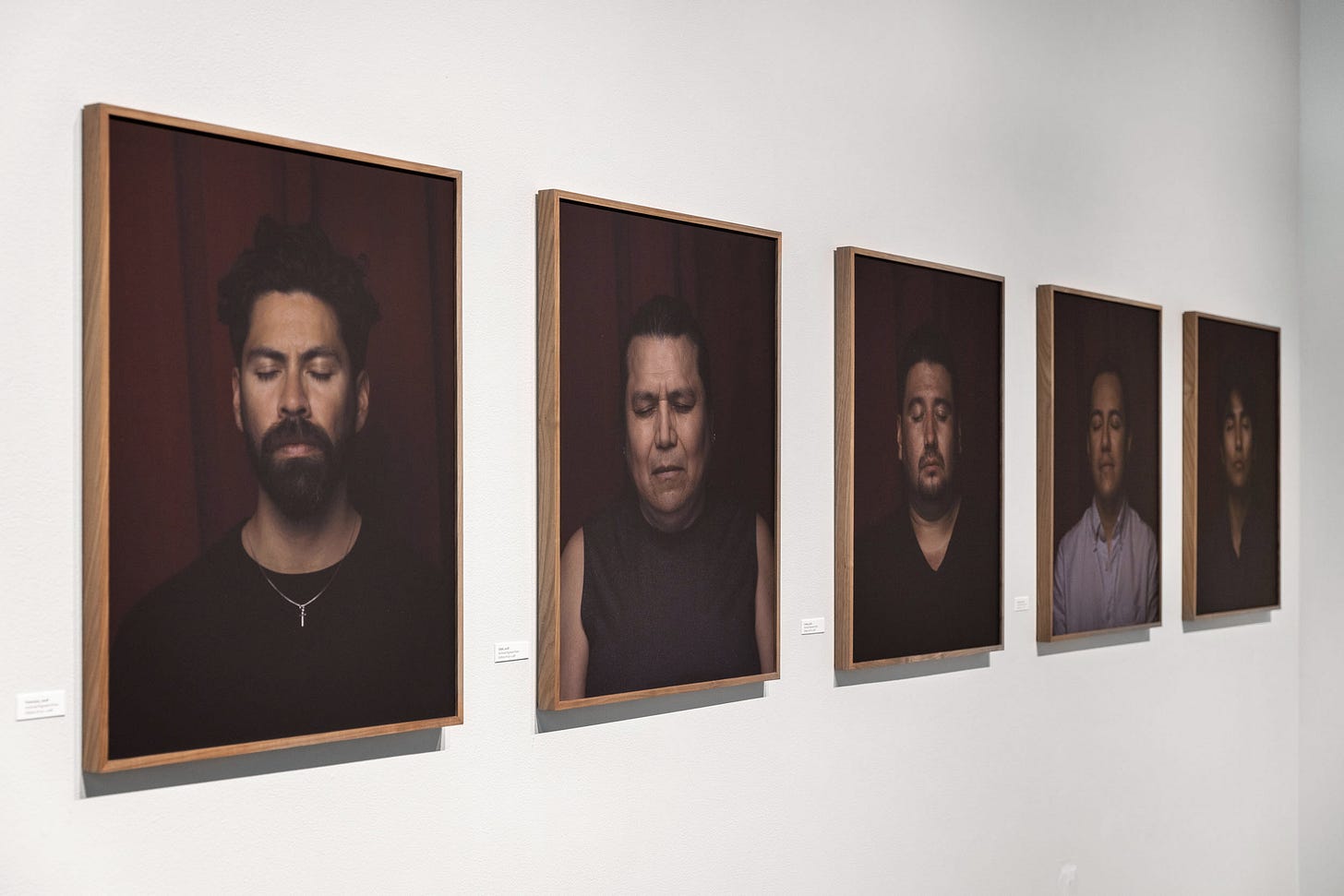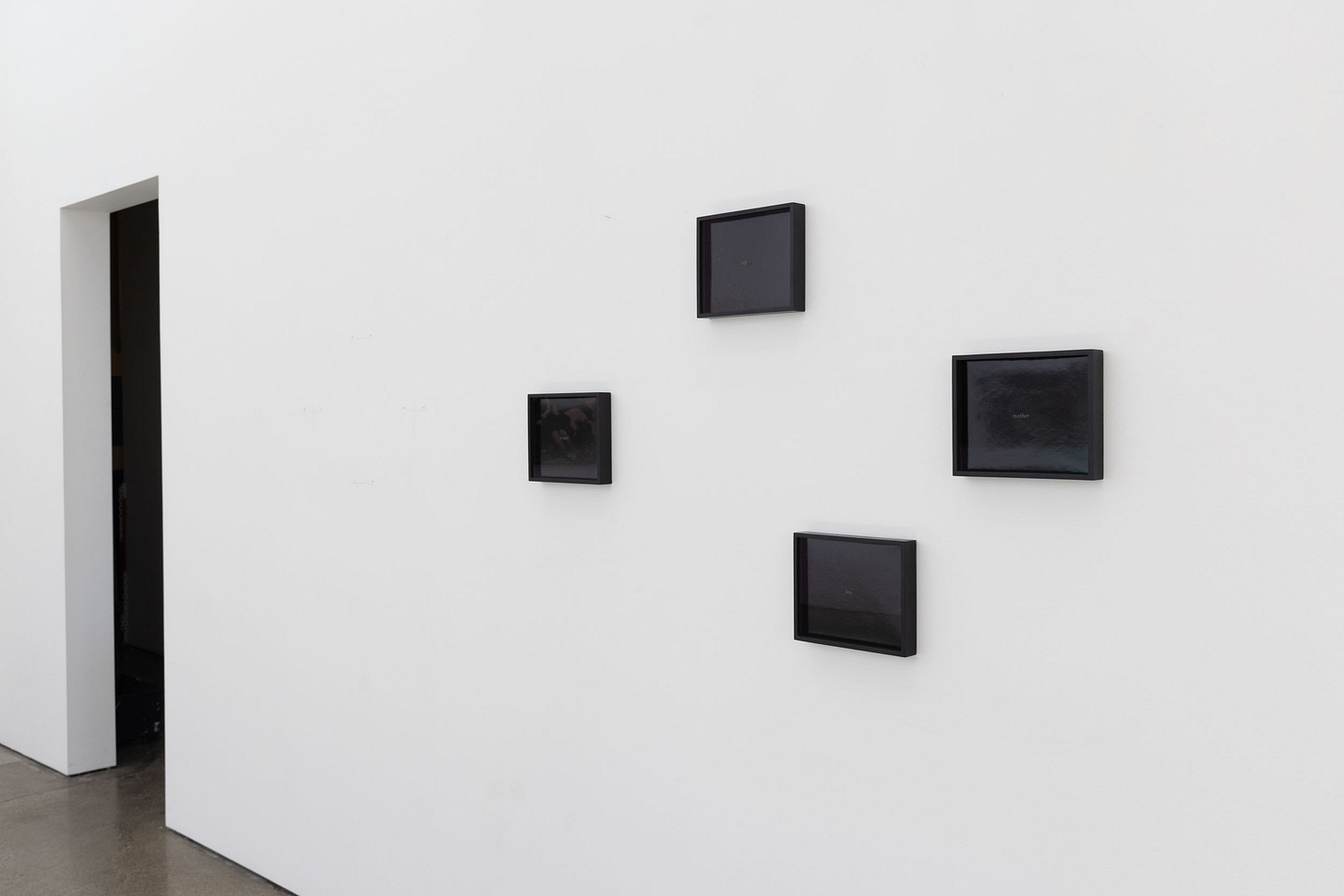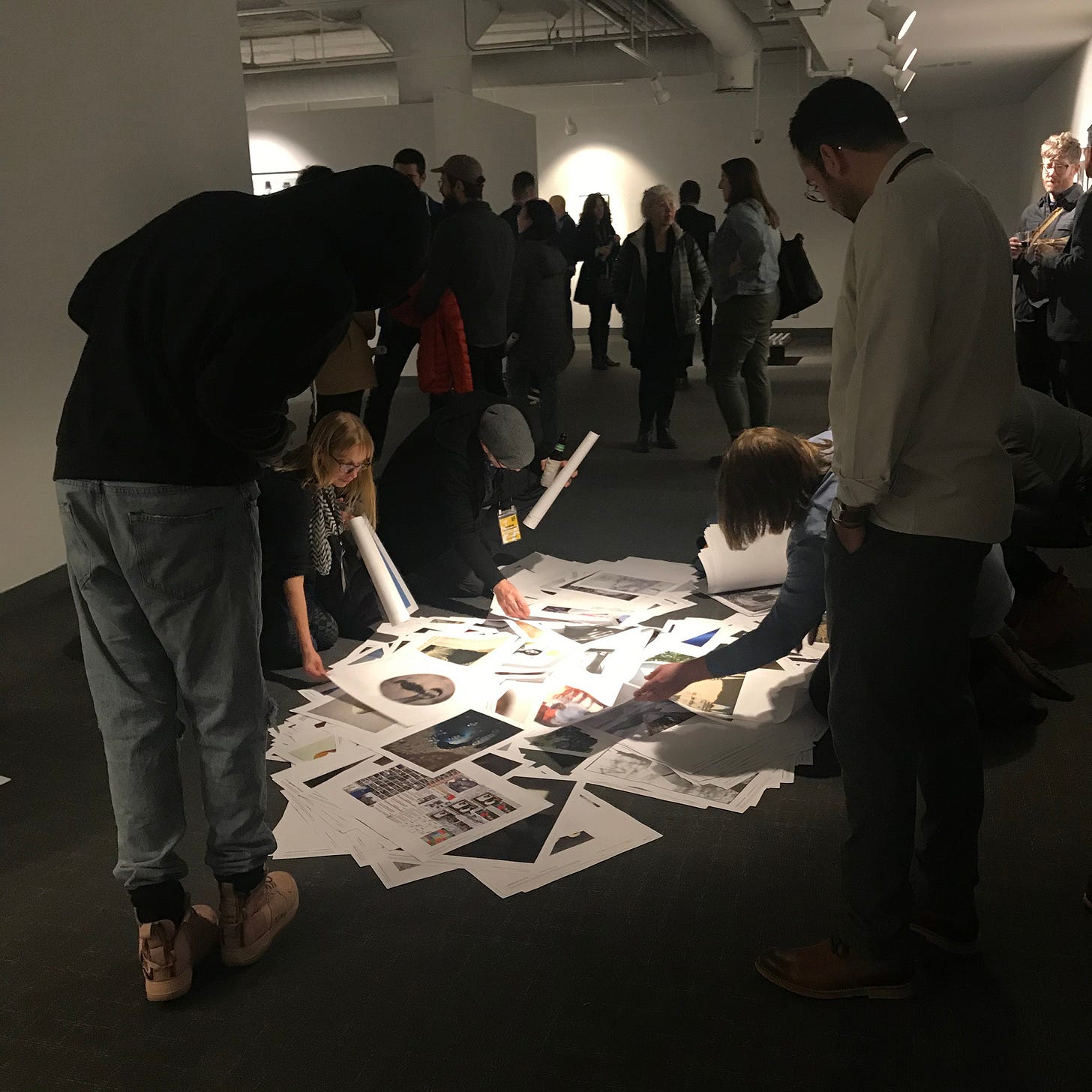Kaleidoscopic No. 18: Rafael Soldi
Connecting to language, to our roots, to the places we're from..
Leonardo Bravo:
This is Leonardo with Kaleidoscopic Projects and I'm here with Rafael Soldi an artist, a curator, and activist. As I dove a little bit more into your own artistic practice it resonated so much with my own experience as an immigrant from Chile, so I wanted to have this conversation with you. I've been recently based out of Berlin but I'm here in Los Angeles for a couple of months, and I believe you're in Seattle. I always like to start off with learning about your own personal journey and story as an artist.
Rafael Soldi:
Thanks, Leonardo, it's so nice to be in conversation with you. I was born and raised in Lima, Peru and I emigrated to the US with my family when I was a teenager. At the time I was about to graduate from high school so I had to decide whether I wanted to go back to Peru for college and build a life there or whether I wanted to do that here.
Around that time I also realized that I wanted to be an artist. I have felt my queerness in a really deep way since I was really young. I never felt like I quite fit in—the lives modeled around me didn't align with the life I wanted to live. There was no roadmap for a life that veered from heteronormativity and traditional professional paths. When we moved here I saw a possibility to build a life that I wanted to live. My parents were demanding but supportive, luckily. They wanted to see me succeed.
I want to go back in time a little bit though, because so much of my practice culls from my schooling years in Peru. I went to an all boys Catholic school for 12 years of my life. And being in that space, that was just ripe with so many layers—of patriarchal masculinity, of social context, of religion, of social norms—really informed and shaped who I came to be. But one thing that happened is that I had a teacher who loved photography. Our art education was minimal, but he offered after-school workshops.
He built a little darkroom in an empty storage room and I started spending a lot of time there. I found a quiet refuge for me to escape and just create magic. Photography was so magical, and the way it just appeared on the page! This is where I got to build a world of my own. I could find beauty of my own, and capture it, and bring it to life, privately without being judged or laughed-at. I think that is the definition of art—a young queer person creating private magic in a space where he could find and build a world full of possibility, curiosity, and wonder. It’s amazing that in a small storage room the world could feel infinite and free, and literally everywhere else it could feel crushing.
Leonardo Bravo:
And even as you're saying this Rafael, the notion of the print, the image coming forward, it's also like that magic of bringing something from the ether, from the shadows, to visibility.
Rafael Soldi:
Yes. Absolutely.
Leonardo Bravo:
So much of what you're saying connects with my own experience. I came to this country, immigrated from Chile, when I was 12. And even as a young child, I was keenly aware of the rigidity, the patriarchal ways and norms of Latin American culture. And even though our experience was one of struggle in a new country, I always saw myself in the space of possibility of being able to redefine what I could be here in the United States.
Leonardo Bravo:
Let’s get into some of your recent projects. I brought up three of your projects Entre Hermanos, Life Stand Still Here, and Shards. If you can share a bit about those both concept and, and processes on these.
Rafael Soldi:
Yeah. Maybe I'll go big picture on those. They're all very connected, but it’s a lot of ground to cover. I like to think of my practice as one large body of work, digested in chapters or explorations which can be understood as projects. Life Stand Still Here is an earlier project that was very pivotal in a lot of ways—it was the first time that I intended to address things that felt very abstract to me.
I had come from a traditional school of representational photography. I was always interested in identity, but I was doing that through portraiture, still life, landscape. This was the first time that I bumped up against something that felt really difficult to convey. I had gone through and recovered from really traumatic breakup, and was interested in the ruins of the inner psyche post-trauma. What happens when one experiences a life-changing event and we are left with parts of ourselves we didn't even know existed? How do we look inward into the residue and make sense of it?
This allowed me an opportunity to explore deeper parts of myself that connect to my heritage, to my identity, to where I'm from. I became really interested in Virginia Woolf, too, and how she wrote about “innerness.” She often wrote from inside her characters, unfolding these deeply abstract corners of their psyche in ways that were more emotionally expressive than didactic. I realized quickly that I couldn’t answer these questions with representational images, and that’s when I started to embrace abstraction, construction, installation. Particularly, I began to use multiple panels and repetition. I realized that if I could create an object that made you feel a certain way, that was just as powerful. So I start to work with symbolic images, with subtle variations of black-on-black and white-on white. I begin to stack frames on top of one another, really embracing playfulness in the studio and working more intuitively.
This was a big eye-opener for me, I was so entrenched in the traditions of photography that I had completely overlooked that I could just be a visual artist. From there I worked on a project titled Imagined Futures, which used performance and the photo booth as a proxy for the Catholic confessional. That was the first time I objectively addressed my relationship to Peru. In sharing this work I learned that there is a huge community of immigrants who lack a language to explore their own story of migration. I began to think about the responsibility of bringing the strategies in my work out to communities around me so we could think through our collective grief together. That's where Entre Hermanos came from.
Leonardo Bravo:
I was very struck by the images and what they convey. Upon reading a little bit about the work itself, they felt very emotional. There's a lot of emotional power there.
Rafael Soldi:
I collaborated with an organization based here in Seattle there called Entre Hermanos, which I ended up using as the title of the work because I just thought it was so lovely. They are a nonprofit that was founded to support the Latinx community through the AIDS crisis. We brought together a group of queer, Latinx male-identifying individuals for an evening of conversation about the lives we left behind in our countries. I shared my work with them and specifically outlined the strategies that helped me tell my own story. I asked, how can these help you think through your own story? And it was just a really powerful evening. The stories were so different, so unique, and yet so much the same. We shared so much. Then I invited each of them into a booth that I built to take their picture.
I walked them through a meditation that was similar to the one I walked myself through when making my work. And I asked them to make a portrait of themselves if/when they wanted to. Each person held the cable release, which was really important to me, they made their own photograph. So we created this kind of collective portrait of the mourning of the lives that we left behind. The futures we left behind together.
Leonardo Bravo:
And then the Shards project, which I found also really compelling.
Rafael Soldi:
Shards is a new piece that I just produced for that show, and it's the beginnings of a larger exploration. I have a show at the Frye Art Museum opening this fall, and I'm working on an 82-panel piece, about language, about bilingualism, and it's called Mouth to Mouth. I'm really excited about it.
But back to Shards—like most of my works there isn’t a single starting point. I realized last year that I had officially been in the US longer than I had been in Peru. And it hurt, you know, it was weird. It just felt like life was tipping a different direction, and I was starting to lose a point of connection that was completely out of my control. On the other hand, I also felt that my Spanish fluency was changing. And that too was a really strange feeling. Language is such a core part of who we are. You are born and you learn to speak, and I learned to speak Spanish, and I spoke it during the most formative years of my life. It's how I learned to become a person, it's how I came out. It has supported my life in so many beautiful ways and now I was just letting it slip away? It was with me during the hardest years. And I know it's not disappearing altogether, but it's becoming something else. It's becoming a different version of it, and I realized too that language is so resilient and fluid, ever-changing, reinventing, unique to every person—like queerness.
I found a beautiful poem by Cecilia Vicuña, titled Language is Migrant. And she's talking about our hatred toward migrants and how language itself is migrant and how it flows from mouth to mouth, which is where the title of the piece comes from that I'm working on. But I started thinking about the words I use to describe my identity and my work. I've talked about “mother tongue” often—this expression we have in English to refer to the language that we spoke when we were born. And I've also talked a lot about being a “soft boy” growing up. And I love the idea of assigning our tongue to our mother and not our father. And thinking of the tongue as something that is fleshy and sensual or grotesque or, beautiful. And I love this idea of assigning all of the complexities of language to something as simple as the tongue, this piece of meat in our mouth, you know?
So the piece has four panels and each panel has a single word—soft, boy, mother, tongue—etched onto the glass, hovering over photographs of a starry night sky. I want the viewer to read the work through the lens of their own prejudice, their own context, their own lived experience. So someone might read it as “mother boy,” or “boy tongue,” or “soft mother,” or “soft boy,” or “soft boy tongue.” Some may find it poetic and beautiful, while some might find it gross or offensive. And I welcome all of those interpretations.
The photographs behind the words were made in Peru at the Space Observatory. They depict the sky exactly as it looked over my mother as she gave birth to me. So it connects to the cosmos, it connects to our roots, to the places we're from, to the waste language behind us. And it's all very kind of intermingled, you know? The title of the piece comes from a poem by Jay Hopler titled Family Astrology, and the first line reads, “those aren’t stars those are shards from my mother’s bone.” I read that poem shortly after I had created the work and I cried.
Leonardo Bravo:
I wanted to talk a little bit about your inspirations along the way. You already talked about the teacher who had the dark room that started a passion for photography, but inspirations either through your upbringing, family education, or even ongoing of the present moment.
Rafael Soldi:
I take inspiration from a lot of places. I try to be very open to the world and I see a lot of art, including art that doesn't typically appeal to me. I've been reading more literature and poetry, seeing more theater, painting, sculpture, video, installation—just really being open to experiences, performance art, and just letting it all marinate. Gardening has become a big part of my life too. I love to garden and I love to spend time in the garden. I’m the farthest from a hippie, but there's something about being with plants and tending to them and watching them grow that has become this really grounding.
Leonardo Bravo:
There's something about that process that engenders a sense of patience, a sense of thoughtfulness, you know, because you have to be absolutely responsive to the sequence of time of the garden itself, of these other, these other beings.
Rafael Soldi:
And it's how I think about my practice. I wanna make work for a long time. The garden definitely helps me think about time differently. I recently read Olivia Laing’s Funny Weather, and in one essay she talks about artists and gardens and this bit stuck with me. She writes:
In her diary of 1939, Virginia Woolf records hearing Hitler on the radio. Her husband Leonard was in the garden he’d painstakingly constructed at Monk’s House, their damp green cottage in Rodmell, East Sussex. “I shan’t come in,” he shouted. “I’m planting iris, and they will be flowering long after he is dead.”
It was true. Gardening situates you in a different kind of time, the antithesis of the agitating present of social media. Time becomes circular, not chronological; minutes stretch into hours; some actions don’t bear fruit for decades. The gardener is not immune to attrition and loss, but is daily confronted by the ongoing good news of fecundity. A peony returns, alien pink shoots thrusting from bare soil. The fennel self-seeds; there is an abundance of cosmos out of nowhere.
Leonardo Bravo:
Well, and it's so ingrained into us through this capitalistic sense of production, of constantly generating stuff, rather than stepping back and thinking about a longer arc.
Leonardo Bravo:
We've touched upon this entanglement of memory, identity, and the multiple positionalities required for this. You’ve also been reflecting a little bit on the understanding of language, understanding your own position around Latinidad, and how that maybe has evolved to your current moment.
Rafael Soldi:
I mean, it's all really connected, right? I think it's something that's been in the past, a struggle for me. And I've learned to be more open to it, which is understanding all of these web-like ways in which all these elements that you mentioned are connected. I used to have a lot of anxiety about feeling like I had to have the words to explain the work right away, that making from a purely intuitive place wasn’t okay unless I had the words to back it up. But I have learned to trust that the work comes from parts of myself I don’t always yet understand. And that it is only in the process of making and sharing it that I can truly find ways to articulate the work. There’s a certain expectation of artists to produce, but I’ve found that when I produce work I’m only half way there—sometimes it’s years after I make something that I come to understand what it’s really about. Or it’s the grind of sharing, lecturing, answering questions, discussing with curators and fellow artists that finally brings me to develop a language for the work.
Leonardo Bravo:
So true. What you're saying about this kind of both/and. To be cognizant that a lot of times it does come from the visceral, intuitive place, which is okay, because we also have the ability to be scholarly based, be research based, bring the context and understanding, and that that's all part of the process at various points.
Rafael Soldi:
That's what research looks like to me, you know? It looks different to each person, but to me it always starts with myself. I can’t speak for anyone else by myself. One of my biggest insecurities is that I really don’t want to make work that feels narcissistic. But I think the only way to make authentic work is to start with my own experience. I've always been very cognizant and very thoughtful about using my identity as a conduit to more universal concerns. I’m also very intentional with formal choices—like titling, statements, and what’s visible in the work—to leave openness for interpretation, to make room for the viewer’s own experience to be reflected back onto the work.
Leonardo Bravo:
I like what you said about this kind of webbed approach, conceptually and with modalities of the work. I wanted to talk about the intersections of your work as an artist, as a curator, as an organizer, and particularly through the lens of the Strange Fire Collective.
Rafael Soldi:
Yeah. Thanks. It's a huge part of my practice, the Strange Fire Collective. I've always been interested in curating. I've always been interested in organizing. I did not follow an academic, curatorial path. So, I wouldn't align myself with, say, a museum curator, but I've just always really enjoyed spending time with other people's work. The Strange Fire Collective came at a time when I had a conversation with some peers who co-founded the Collective with me. We talked about how we were having a really hard time finding ourselves in the art world around us. We weren't really seeing people of color or trans people or feminist perspectives represented. We knew they were out there, but they were very scattered and it was really hard to find them. We wanted to create a safe platform where one could find a wide range of voices outside of white heteronormativity.
We knew we didn’t want to just compile content, we wanted to create new content. We conducted original interviews with artists who fit our mission and posted a new interview every Thursday of every week. By now we have roughly 250 interviews and they really range. Each of us started to kind of build our own direction. I became really interested in highlighting Latinx voices. Over time the collective grew and we started doing exhibitions, publications, essays and book reviews, becoming this kind of living-and-breathing archive. We invited a lot of collaborators to contribute as well. At the end of 2022, we decided to conclude the project and archive it, after seven very active years.
It was so much work, and I’m really glad to be shifting energy elsewhere, but it became a really big part of my practice. I selfishly would seek artists whose practices really resonated with mine. Or sometimes I was in moments where I had some really big questions about my practice, so I would seek artists who I felt were successfully addressing those questions in their own work. I was so curious and hungry so the interview was always lively, but it was also a great way for me to find intellectual and creative exchange that fed my own practice as well.
Leonardo Bravo:
It's fascinating having you describe this because it's the same ethos that drives these interviews, at a very selfish level they feed my own curiosity because I have that sense of hunger to be in conversation and to connect with peers and colleagues. And my interests are really broad, particularly from artists or practitioners that, like you're saying, go against these sort of simplistic binary models, and present something that is far more expansive in how they approach the work. That only kind of fortifies my sense of what I want to do as well.
Rafael Soldi:
I came out of art school with a really romantic notion of what being an artist should be. And I think that's sadly a thing art schools are guilty of. I thought the extent of being an artist was limited to what happens in the studio. But I now embrace a much more expansive way of thinking, like a connective tissue.
Leonardo Bravo:
And then finally, I wanted to ask you, what gives you pause first and then what is inspiring you? What's uplifting you right now?
Rafael Soldi:
What gives me pause right now is sadly an easy answer—the onslaught of hate that's being currently legislated. The culture wars that are legislating and restricting the bodies and freedoms of queer people in this country. Conservatives are losing power, they’re scared, so instead of delivering solutions to problems like childhood hunger, gun deaths, homelessness, crumbling healthcare, they’re diverting attention by being very cruel to queer people, and specifically trans children, who just want to exist. It's been just really, really sad and really troubling.
One thing that's really inspiring, I think is the kids. I'm a millennial and I spend so much time hearing from the generation above me just how problematic we are and how we don't know what we're doing and how we're lazy, while we are struggling to navigate this really fucked up world they’ve left behind for us. And I hate that, because I don't feel the same way about the generation below me. I just feel like, in the face of a really challenging world, the kids are doing great. Maybe it's just that they're empowered by social media in a way that we weren't, but they’re are out there protesting, voting, and standing up for what they believe in while living through some really troubling times. I’m inspired by their rejection of gender norms too. I would be comfortable with a bunch of young people in congress, but that's not something I can say for the generation above me, you know?
Leonardo Bravo:
That's beautiful because I also teach and I recognize in them that they will not stand for a world that is simply one way. They demand fluidity, they need hybridity, they need a sense of a world that's all encompassing. So they will not, they're not gonna put up with a world that closes back in.
Rafael Soldi:
Absolutely.
Leonardo Bravo:
Well Rafael this has been such a treat. I really, really appreciate your, the conversation here and your perspective. So many relational points in the journey as well. I look forward at some point to seeing your work in person, maybe in Berlin?
Rafael Soldi:
That would be great. It's been a while since I've been there, I'd love to visit again. Thank you Leonardo.
For more information:
https://rafaelsoldi.com/
IG: @rafaelsoldi










